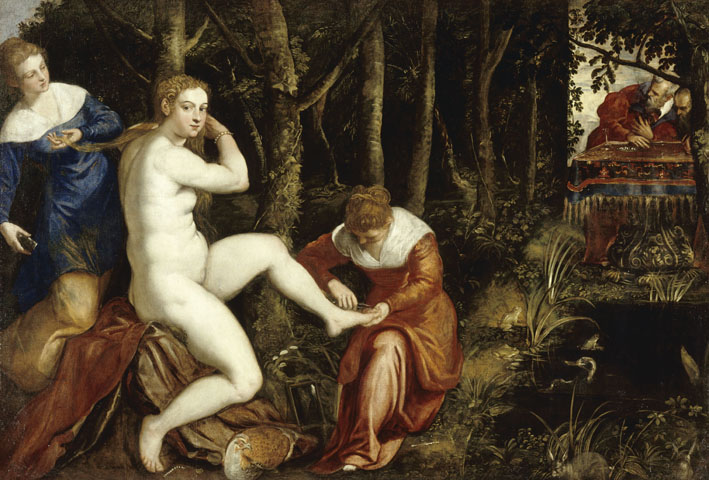Fr : version française / En: english version
mheu, Historical Museum of the Urban Environment
Susanna at her Bath
Jacopo Robusti, dit le Tintoret

16th century
oil on canvas
167cm x 238cm
Paris, Musée du Louvre
© RMN / Hervé Lewandowski / Thierry Le Mage
View this work in the exhibition Bathing
The work
The uniqueness of this rendering of Susanna at her Bath by Tintoretto lies both in the perspective afforded by the row of trees linking the nude figure with the lustful looks of the elders, and by the mirror placed on the ground between the legs of the bathing beauty, which reflects nothing. As with Rembrandt and Rubens later, here we are dealing with portrayal, voyeurism and desire. The elders are painted figures who are looking at nothing and see nothing. Our gaze on the other hand, which Tintoretto makes lustful, tries to catch a glimpse of Susanna's "secrets" in the mirror. But Susanna is chaste and we see nothing. We see nothing because we are not looking in the right place, we are looking for the subject without even seeing the painting.
The artist
The young Jacopo's father, Battista Robusti, was a dyer (tintore) and his son was nicknamed Tintoretto. He was born in Venice in 1518. Some historians believe he was taught by Titian while others claim Boniface de Pitabi. Whichever was the case, in his youth he was influenced by the former before breaking away and adopting a mannerist style verging on baroque, both dynamic and turbulent, with dramatic lighting.
In 1564, he was appointed decorator of the Scuola Grande di San Rocco in Venice, for which he painted a total of sixty-seven pictures, the last in 1588. Well-known throughout Italy and invited to the Gonzaga court in Mantua in 1578, Tintoretto painted quickly, often after having studied the light using wax models of the scenes and figures he was to paint, which gave his work its dramatic aspect. He died in Venice in 1594.